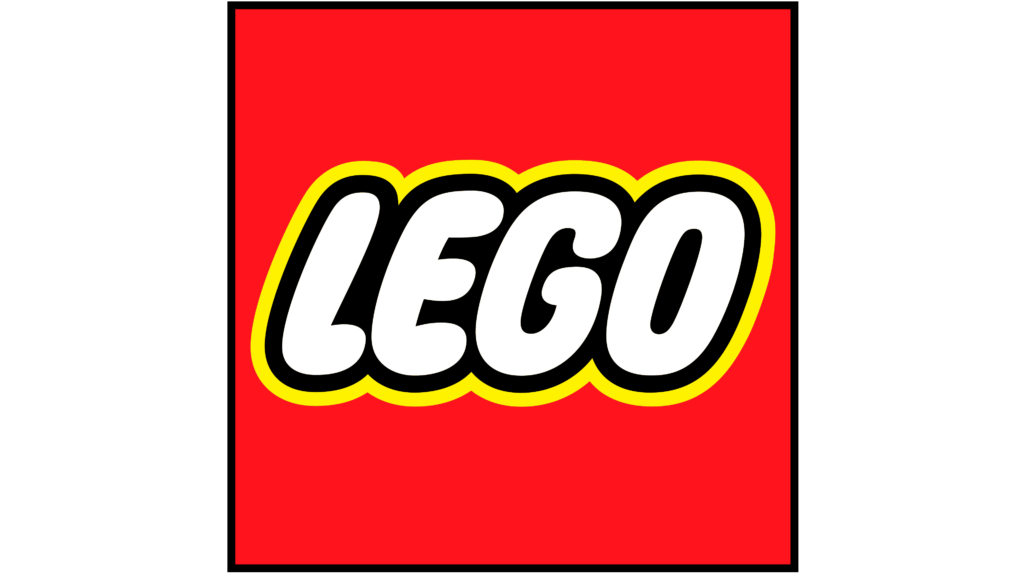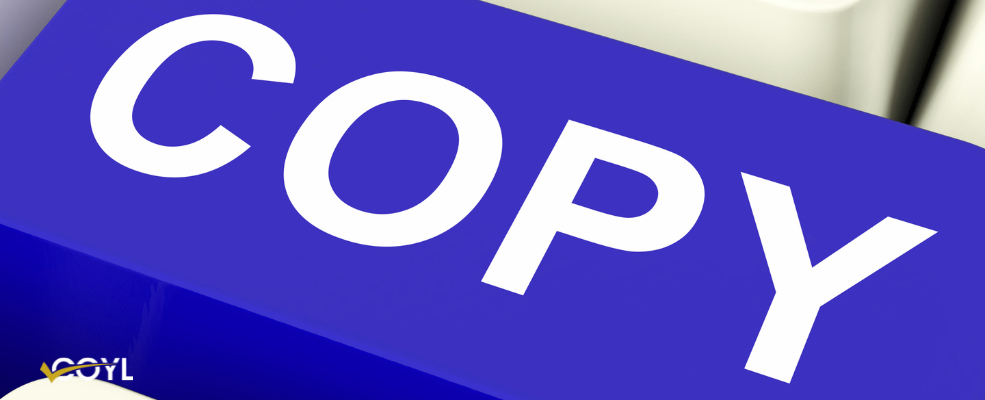A winning brand playbook assists businesses of all sizes in building a strong brand identity. A brand strategy playbook acts as a guide outlining your brand’s core and directing communication with the public.
Understanding Branding and Its Significance
Branding goes beyond just a logo or a tagline and plays a significant role in your business’s success. Branding is the impression your business makes, how it presents itself, and how customers and the public as a whole perceive it.
The Impact of Branding on Consumer Perception
First impressions matter, and your brand is that first impression. Studies have shown that consumers are willing to pay a premium for a brand they trust and connect with.
The perception of your brand can significantly impact consumer behavior.
Brand Elevation through Enhanced Customer Experiences
Forbes has just revealed the leading brands of 2024, known for delivering outstanding customer experiences. This ranking resulted from extensive surveys and analysis of countless metrics throughout 2023.
The top 5 distinguished brands on this list include:
- Buc-ee’s: Convenience Stores
- Chick-fil-A: Quick, Fast, Casual Dining
- H-E-B: Grocery
- Toyota: Automotive
- Costco: Superstores
These renowned brands have achieved long-term success and solidified their positions by prioritizing exceptional customer service. This strong commitment has shaped positive consumer perception, building brand loyalty and trust globally.

The Anatomy of a Business Brand Playbook
A brand playbook is a set of rules and guidelines. It keeps your brand consistent across all marketing channels and customer interactions.
Brand Identity and All Its Facets
Your brand playbook should start with a clear and concise definition of your brand identity.
This includes your:
- Mission: The purpose and reason for a company’s existence.
- Values: The guiding principles that shape the culture, decisions, and actions of a company.
- Voice: Consistent tone, style, and language across all company communications and messaging.
- Story: A narrative that showcases your history, values, and what makes you unique.
- Visual Elements: Logos, color palettes, and typography that constitute your visual identity.
This is the genetic code of your brand. Brand identity helps everyone inside and outside the company keep a consistent brand experience.
In-Depth Step-by-Step
With the foundational understanding of your brand established, it’s time to build each piece. Every step is vital to articulating a brand that is both meaningful and memorable. Consider the following.
Crafting Your Unique Brand Message
Your brand message is the soul of your brand. It must be clear, compelling, and resonate with your audience. Identify what sets your brand apart and ensure that it reflects in every aspect of your messaging.

Good Brand Message: “Build the best product, cause no unnecessary harm, and use business to inspire and implement solutions to the environmental crisis.”
Why It’s Effective:
- Reflects Brand Values: Patagonia’s brand ethos centers on environmental sustainability and social responsibility, attracting consumers who prioritize ethical and eco-friendly practices.
- Clear and Memorable: The message is straightforward, to the point, and unforgettable. It successfully conveys Patagonia’s mission, distinguishing it from its competitors.
- Consistent Across Channels: Patagonia delivers its brand message effectively through its products, marketing, and corporate efforts. This consistent approach enhances its credibility and strengthens its brand presence.

Bad Brand Message: “Beyond Petroleum.”
Why It’s Ineffective:
- Disconnected from Reality: BP’s “Beyond Petroleum” slogan was criticized as greenwashing, especially after the 2010 Deepwater Horizon oil spill. It seemed contradictory to BP’s main focus on fossil fuels and its record of environmental impacts.
- Lack of Authenticity: The brand’s message wasn’t seen as genuine or credible, resulting in doubts and criticism from customers and environmental supporters.
- Inconsistent with Actions: BP’s credibility was compromised by actions like resisting environmental regulations and allocating minimal investment in renewable energy relative to its fossil fuel ventures.
- Failed to Address Concerns: The brand’s messaging did not tackle genuine worries regarding BP’s impact on the environment and sustainability efforts, which further diminished trust and goodwill among stakeholders.
Crafting a Brand Story Your Audience Connects With
Your brand story is more than a history lesson. It should connect emotionally with your audience, giving them a reason to support your brand. A good story creates an indelible mark in your customer’s memory and builds brand loyalty.

Good Brand Story: In 2006, Blake Mycoskie launched TOMS, driven by a mission to use business as a force for good. Motivated by a trip to Argentina where he saw children without shoes, Mycoskie established the One for One model at TOMS. With every pair sold, another is given to a child in need. This model of social entrepreneurship quickly captured the hearts of consumers, propelling TOMS to swift success and growth.
Why it’s Effective:
- Emotional Connection: The narrative of TOMS’ brand resonates deeply, eliciting empathy and compassion by showcasing the significant effect of its mission on individuals. This creates an emotional bond between consumers and the brand’s ethos.
- Authenticity: TOMS’ origin story is deeply authentic and genuine, mirroring Blake Mycoskie’s own journey and dedication to social causes. This genuine nature boosts trust and loyalty among consumers.
- Inspires Action: TOMS captures consumer interest by centering its branding narrative on a tangible and inspiring mission. This encourages customers to back its cause with their purchases, fueling engagement and promoting brand loyalty.

Bad Brand Story: Founded in 2003 by Elizabeth Holmes, Theranos aimed to revolutionize healthcare by making blood tests simpler and cheaper. However, the company soon faced fraud accusations. Holmes claimed their technology could perform comprehensive tests with just a few drops of blood, but investigations revealed the technology was unreliable and inaccurate. This led to Theranos’ downfall, tarnishing its reputation and resulting in legal battles and financial losses.
Why it’s Ineffective:
- Lack of Transparency: Theranos’ brand narrative suffered from a lack of transparency and honesty, constructed on misleading promises and overhyped capabilities of its technology. This led to a loss of trust and credibility among consumers, investors, and regulators.
- Failure to Deliver on Promises: The gap between Theranos’ public image and its real capabilities underscored the company’s inability to fulfill its promises. This inconsistency eroded the brand’s credibility and contributed to its collapse.
- Negative Impact: The Theranos scandal resulted in widespread repercussions, tarnishing the image of its founders, investors, and partners. The narrative of the company’s brand became associated with deception and unethical practices, creating a persistent negative impact on all parties involved.
In summary, TOMS’ brand story underscores the importance of authenticity, clear purpose, and social impact. On the other hand, the Theranos story serves as a caution, emphasizing the need for transparency, integrity, and responsibility in developing a brand.
Choosing Your Visual Brand Elements
Visuals are critical to brand memory. Your logo, color scheme, and typography should reflect your brand identity and values. They should be unique enough to resonate with your audience and stand out.

Good Visual Brand Elements:
- Logo: Apple’s logo, featuring a bitten apple, is legendary and immediately identifiable. Its simplicity, elegance, and memorability symbolize the brand’s dedication to innovation and superior design.
- Color Palette: Apple’s use of a minimalist color scheme, featuring white, silver, and black, radiates sophistication and a contemporary vibe, further enhancing its reputation for high-end products and quality.
- Typography: Apple’s choice of sleek, sans-serif fonts like Apple Garamond and San Francisco communicates simplicity, clarity, and elegance, improving readability and ensuring consistent branding across different platforms.
- Product Design: Apple’s product design features smooth contours, a minimalist style, and premium materials, mirroring the brand’s emphasis on innovation, practicality, and user experience.
Why It’s Effective:
- Consistent Brand Identity: Apple applies its visual brand elements uniformly across all communication platforms, establishing a unified brand identity that engages consumers.
- Differentiation: Strengthening its status as a technology industry leader, Apple’s unique visual branding distinguishes it from rivals.
- Emotional Connection: Apple’s imagery resonates with simplicity, elegance, and sophistication, forging a powerful emotional connection with its consumers.

Bad Visual Brand Elements:
- Logo: During the Ron Johnson era, JCPenney adopted a logo comprising a blue box with “jcp” letters and a red square. This design was criticized for its lack of creativity and failure to connect with consumers, leading to confusion and negative feedback.
- Color Palette: JCPenney’s color scheme featured vibrant primary colors such as red, blue, and yellow, which were discordant and failed to present a unified look. This lack of harmony in colors failed to communicate a coherent brand identity, leading to confusion about the brand.
- Typography: The varied fonts and inconsistent typography in JCPenney’s branding materials led to a disjointed and unprofessional look. This lack of consistency and difficulty in reading harmed the overall brand experience.
- In-store Design: Under Ron Johnson, JCPenney’s modernization efforts led to disorganized store layouts. The removal of usual sales promotions and coupons turned away faithful customers without drawing in new ones.
Why It’s Ineffective:
- Lack of Cohesion: JCPenney’s brand visuals were inconsistent and unclear, hindering consumer identification and connection with the brand.
- Loss of Brand Identity: Under Ron Johnson, JCPenney’s major overhaul of its visual brand elements turned away loyal customers familiar with its classic image, leading to a diminished brand identity and reduced market share.
- Inconsistent Brand Experience: The lack of uniformity in JCPenney’s visual branding across digital and physical spaces led to a fragmented brand perception, which struggled to engage customers and boost revenue.
In conclusion, Apple’s strategic use of visual branding has greatly strengthened its brand identity and consumer loyalty. Meanwhile, JCPenney’s mishandling of these elements under Ron Johnson led to confusion, alienation, and a weakened brand image.
Launching Your Brand to the Public
You should carefully orchestrate your brand’s public launch and leverage all available platforms. From traditional media to digital channels, ensure your launch communicates a consistent brand message and image.

Good Public Brand Launch:
Background: In 2014, Airbnb introduced the “Belong Anywhere” campaign to redefine its image beyond merely a site for booking places to stay. This campaign focused on highlighting the emotional bond and feeling of belonging that Airbnb creates between travelers and hosts.
Execution: The “Belong Anywhere” campaign presented a collection of visually captivating and emotionally touching ads through multiple channels such as TV, digital, and outdoor. These advertisements highlighted a variety of distinctive Airbnb listings located worldwide, paired with uplifting stories about forming connections and community.
Impact: The “Belong Anywhere” campaign effectively changed how the public viewed Airbnb, transforming it from a mere transactional platform to a community-oriented brand that emphasizes shared experiences and a sense of belonging. This initiative created a significant buzz and positive feelings towards the brand, leading to higher brand recognition, more user interaction, and an uptick in bookings.
Why It’s Effective:
- Emotional Appeal: The “Belong Anywhere” campaign connected deeply with people by focusing on the universal feelings of connection, belonging, and the desire to explore, striking a chord with both travelers and hosts alike.
- Compelling Storytelling: Airbnb brought its brand purpose to life by using storytelling, with visually engaging ads and genuine stories, encouraging people to discover the world and connect with others.
- Consistency Across Channels: The campaign was seamlessly implemented across different marketing platforms, guaranteeing a consistent brand message and optimal impact.
- Positive Brand Associations: Airbnb enhanced its brand image and set itself apart from rivals in the travel sector by embracing and promoting inclusivity, diversity, and a sense of community.

Bad Public Brand Launch:
Background: In 2017, as a component of its “Live for Now” campaign, Pepsi unveiled an ad with Kendall Jenner. It showed Jenner at a protest where she eased the standoff between demonstrators and law enforcement by handing a Pepsi can to a police officer.
Execution: Immediately, the advertisement was criticized for belittling significant societal and political problems, like police violence and demonstrations, implying that a can of soda could resolve these issues. Pepsi was condemned for using social movements to benefit commercially and for capitalizing on activism for promotional aims.
Impact: The Pepsi commercial received widespread backlash for being perceived as tone-deaf and insensitive. It ignited a firestorm on social media, with many people calling for a boycott of Pepsi products, which harmed the brand’s image.
Why It’s Ineffective:
- Insensitive Messaging: The Pepsi commercial overlooked the depth and intricacy of social problems, simplifying them into basic and shallow actions.
- Lack of Authenticity: The advertisement felt forced and insincere, with Kendall Jenner’s participation appearing opportunistic and out of touch with the true essence of activism and social justice.
- Misjudgment of Public Sentiment: Pepsi failed to accurately gauge public sentiment and the cultural landscape, leading to a PR fiasco that eclipsed its original message of unity and inclusion.
In conclusion, Airbnb’s “Belong Anywhere” campaign successfully resonated with its audience by leveraging emotional storytelling and a clear brand mission, in stark contrast to Pepsi’s Kendall Jenner advertisement, which faltered due to its insensitive portrayal of social issues and absence of authenticity.
Brand Strategy for Sustainable Growth
Crafting a brand strategy is about aligning your brand’s essence with consumer needs and market trends. Incorporate these tactics to build a resilient and robust brand presence.
- Market Research and Brand Strategy. Comprehensive market research is the bedrock of an effective brand strategy. It provides insights into your market position, competitor analysis, and consumer perceptions that inform strategic brand decisions.
- Analyze Your Brand Strategy Over Time. Your brand strategy must be dynamic. Regularly review and adjust your brand strategy to stay relevant and competitive in the market.
- Case Studies of Successful Brand Strategies. By analyzing the strategies of companies that have achieved notable success through branding, you can distill valuable lessons. From Apple to Coca-Cola, study how consistent branding has built their empire.

Maintaining and Evolving Your Brand
Once you’ve chosen and initiated a brand strategy, it’s time to update your playbook. Your brand playbook must outline methods to maintain and evolve the brand as your business grows and the market changes.
The Importance of Brand Audits and Reviews
Regular brand audits are essential for evaluating your brand strategy’s effectiveness and pinpointing areas needing adjustment. They maintain brand consistency with original goals and align market messages with customer perceptions.
Strategies for Maintaining Brand Relevance
Consider leveraging new technologies, exploring emerging trends, or even taking calculated risks that align with your brand image. Consider these strategies:
- Stay customer-centric: Continuously understand your audience’s evolving needs and preferences.
- Consistent messaging: Ensure your brand’s voice, tone, and messaging are cohesive across all channels.
- Engage with your audience: Build relationships through social media, events, and other interactive platforms.
- Collaboration: Partner with complementary brands or influencers to expand your reach and relevance.
Adapt, Evolve, and Maintain Identity
When the need arises, adapt your brand strategy and playbook as long as it aligns with your brand’s core identity and values.
Think of the below brands that have successfully managed this:

Apple: Has always improved its products and services. They started with computers and moved on to smartphones, tablets, wearables, and services like Apple Music and Apple TV. Throughout these changes, Apple has stuck to its core values of simplicity, innovation, and user-focused design.

Nike: The brand is famous for its sports shoes and clothing. It has changed with the times by adding sustainability, technology, and stylish designs to its products. While changing, Nike has stayed loyal to its core of supporting athletes and encouraging a “Just Do It” mindset.

LEGO: Began as a brand of simple toys based on a brick system. Today, LEGO is a successful brand with video games, movies, theme parks, and educational products. LEGO continues to prioritize creativity and imagination.

Starbucks: From humble roots as a small coffee shop, they have grown worldwide. Despite growing and diversifying, Starbucks stays true to its brand: quality coffee, building community, and supporting sustainability.

Amazon: Started as an internet bookstore but has grown into a top global e-commerce site. It now provides many products and services, such as cloud computing, streaming media, and AI gadgets like the Amazon Echo. Even with its growth, Amazon remains customer-focused, prioritizing convenience, choices, and good prices.
Customer Feedback and Brand Evolution
Listening to your customers is a great way to see how people view your brand and where it’s heading. Integrate customer feedback into your brand strategy to keep the conversation two-way and customer-centric.
Conclusion
Building a brand playbook is an investment in the future of your business. When you clearly define your brand and communicate it consistently, you can build recognition and trust. This can lead to long-term loyalty and sustainable growth.
Remember, each part of your brand playbook should reflect your brand’s core values. Each choice you make should be deliberate and intentional.





